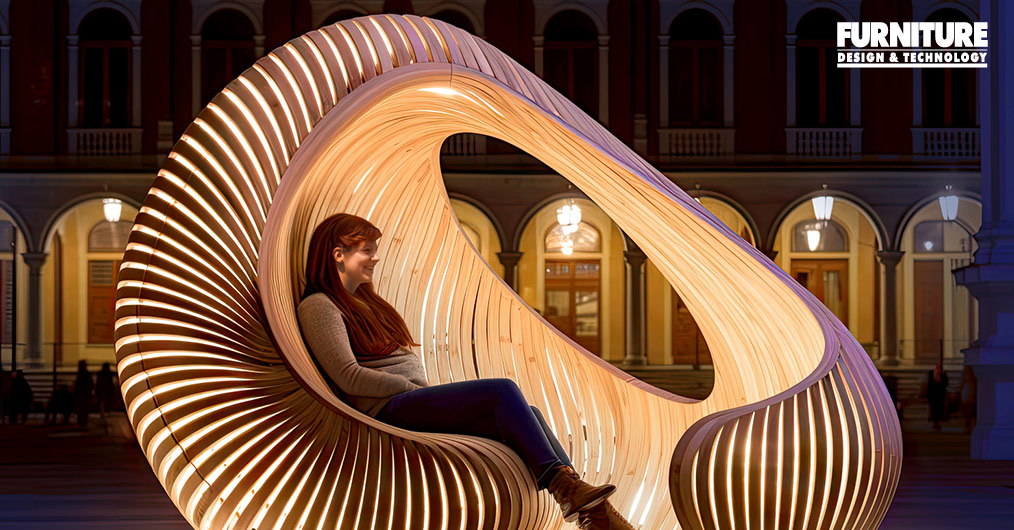
The Parametric Lampchairs designed by Vincent Callebaut Architectures embrace the concept of agro-waste design or the integration of biomaterials from agricultural waste into furniture design and architectural projects. This entails a reimagining of the prevailing linear economic model, where production is intrinsically tied to the extraction of natural resources and their eventual disposal once they’ve served their purpose. Know more about it on FURNITURE DESIGN AND TECHNOLOGY (FDT).
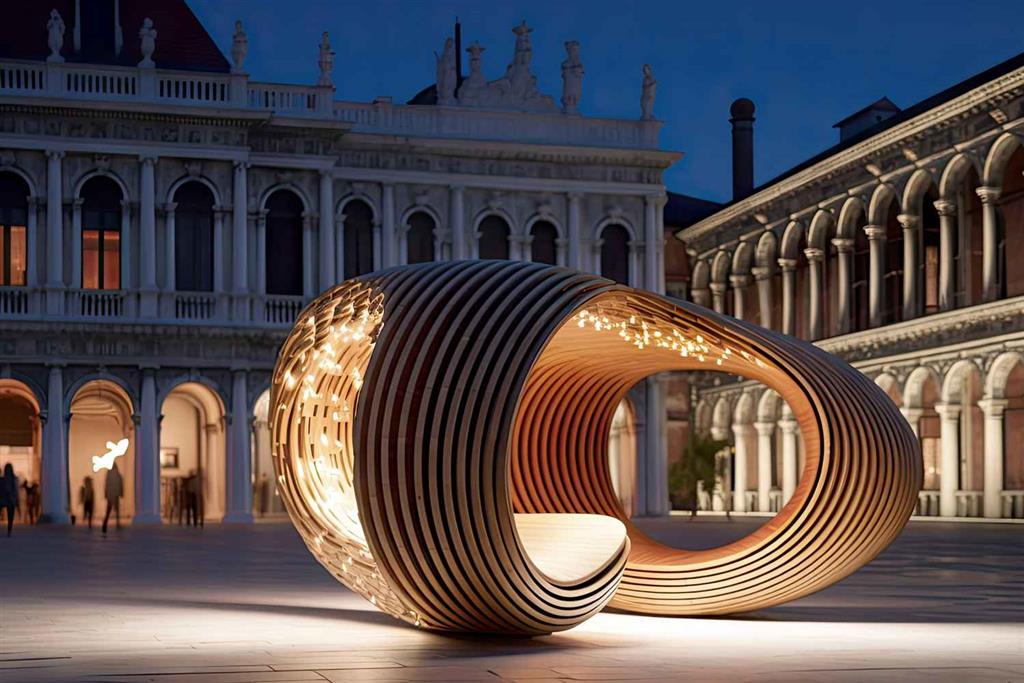
Aligned with the principles of upcycling and the circular economy, the approach involves redirecting organic waste from both urban and rural areas away from landfills or incineration. This waste can then be repurposed as raw materials for the creation of products, only to be reintegrated into the biological cycle at the end of their useful life.
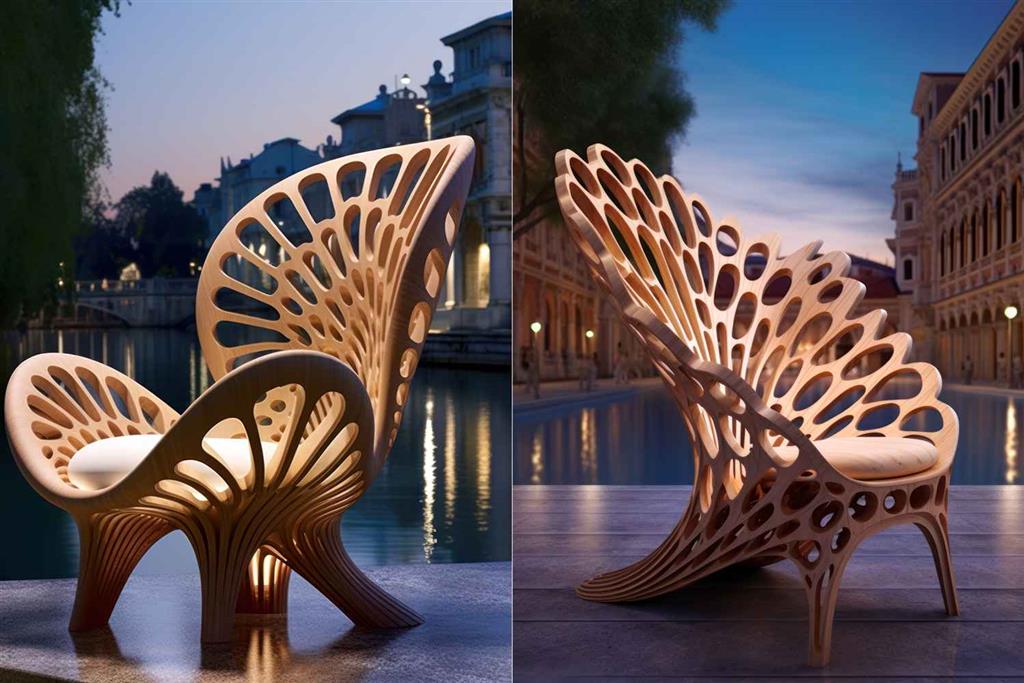
The urban furniture collection, Parametric Lampchairs, strives to prevent the conversion of agricultural waste into recycled materials like wood, grass, straw and algae. These biomaterials possess the potential to give rise to designs that are not only aesthetically captivating but also remarkably efficient. Crucially, these designs are entirely biodegradable, leaving minimal ecological impact.
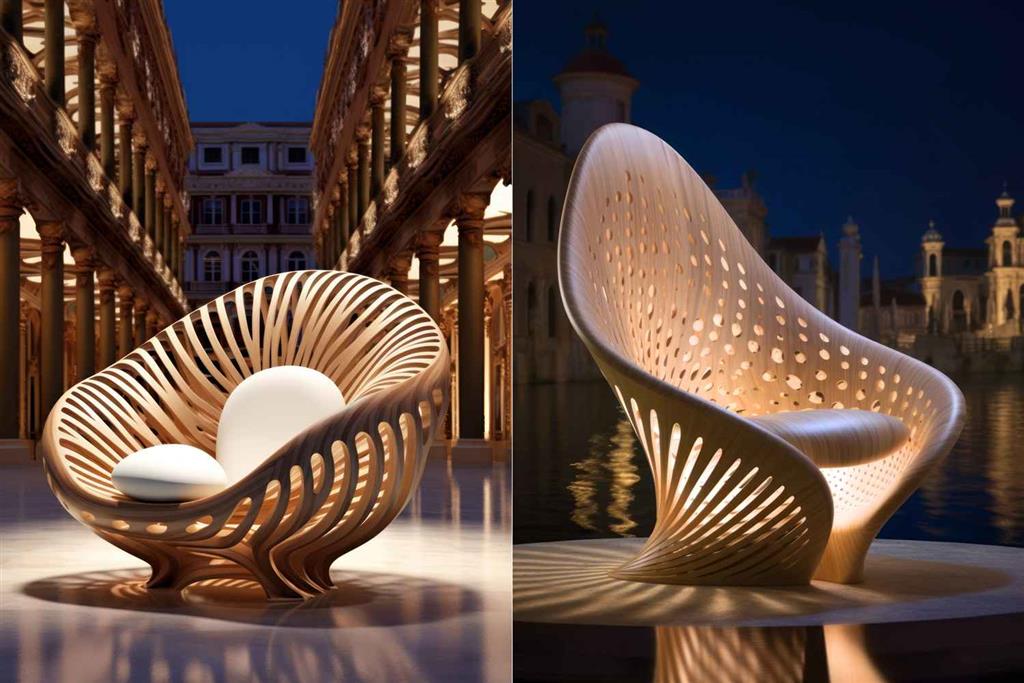
This initiative encompasses a spectrum of materials, including cut wood from orchards, corn cobs from fields, sugarcane fibers, rice straw, wheat, soybeans, peanut shells, bananas, sunflower, cellulose, among others. The selection depends on the specific context, climate and cultural backdrop. Furthermore, natural fibers can be combined with biopolymers sourced solely from plants such as agar-agar, sodium alginate and starch to create sturdier end products suitable for exterior use. Some natural fibers like potato skins and cork, boast notable water-repellent attributes.
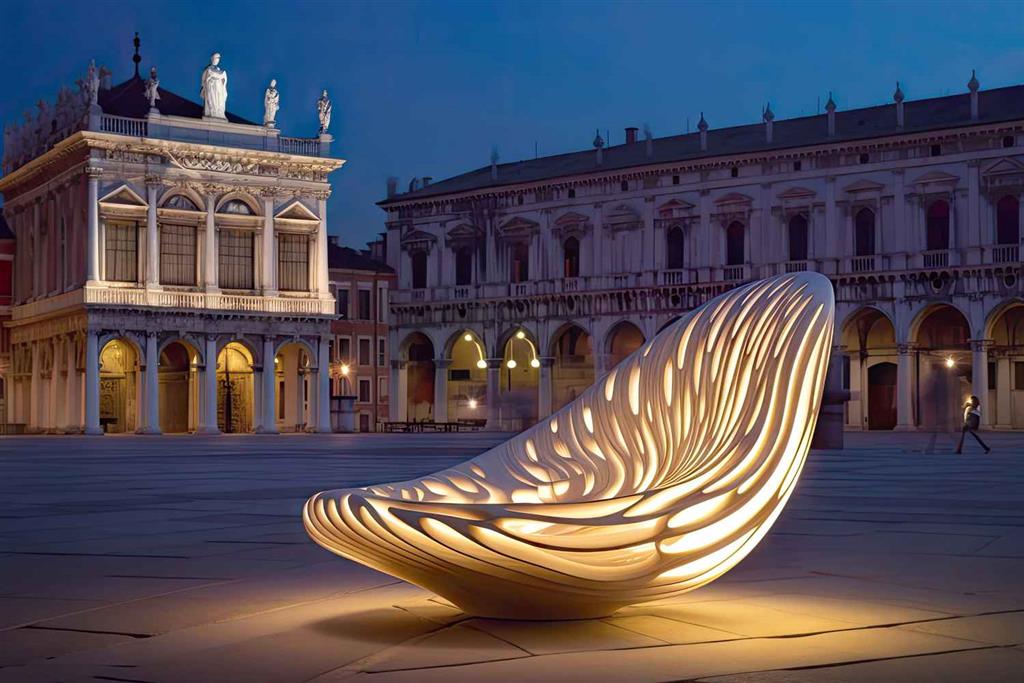
This bio-based creation process not only addresses gaps in the product life cycle but also serves as a catalyst for generative citizenship through upcycling. This empowers individuals to take charge of their waste, fostering practices of reduction, recycling and reuse. Scientific studies underline that reusing agricultural waste not only contributes to tackling pollution arising from conventional construction materials like cement, steel and plastic, but also addresses concerns about waste disposal in landfills. These biomaterials have now gained commercial viability and technical qualities that put them on par with traditional products.
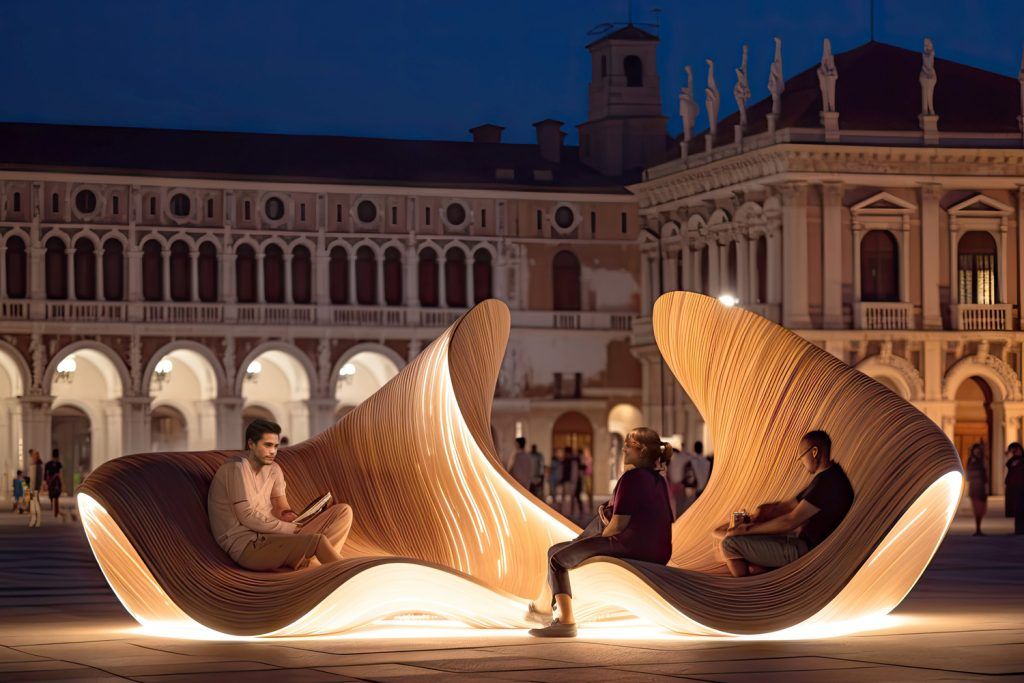
The Parametric Lampchairs, crafted using natural fibers derived from the agricultural industry, are molded, braided, pleated, or 3D printed to generate ergonomic geometries. These intricate forms are parametrized from minimal mathematical surfaces with fluid lines, inherently reducing energy and material consumption during manufacturing. Applying biomimicry to design provides a solid pathway towards achieving global sustainability goals and cultivating an environmentally conscious future, all while drawing inspiration from mathematics that optimizes nature's diverse forms.
Image credit: Vincent Callebaut Architectures
Furniture Design India and the magazine FURNITURE DESIGN & TECHNOLOGY (FDT magazine) are from the trusted 22-year-old media house of SURFACES REPORTER and PLY REPORTER.
FDT is a B2B monthly bilingual magazine from India that shares the pulse of the furniture business in India and connects the manufacturers, OEMS, product designers, architects, showrooms, designers and dealers.
Read More© 2025 Furniture Design and Technologies.. All Rights Reserved. Developed by eyeQ Advertising